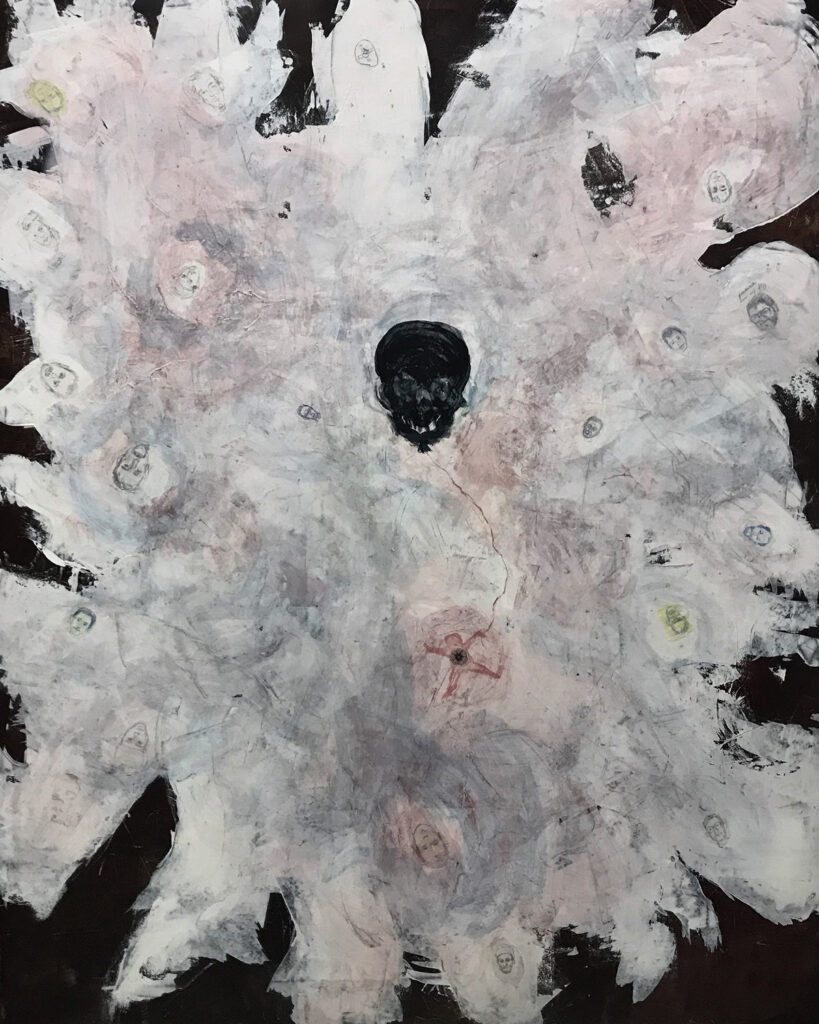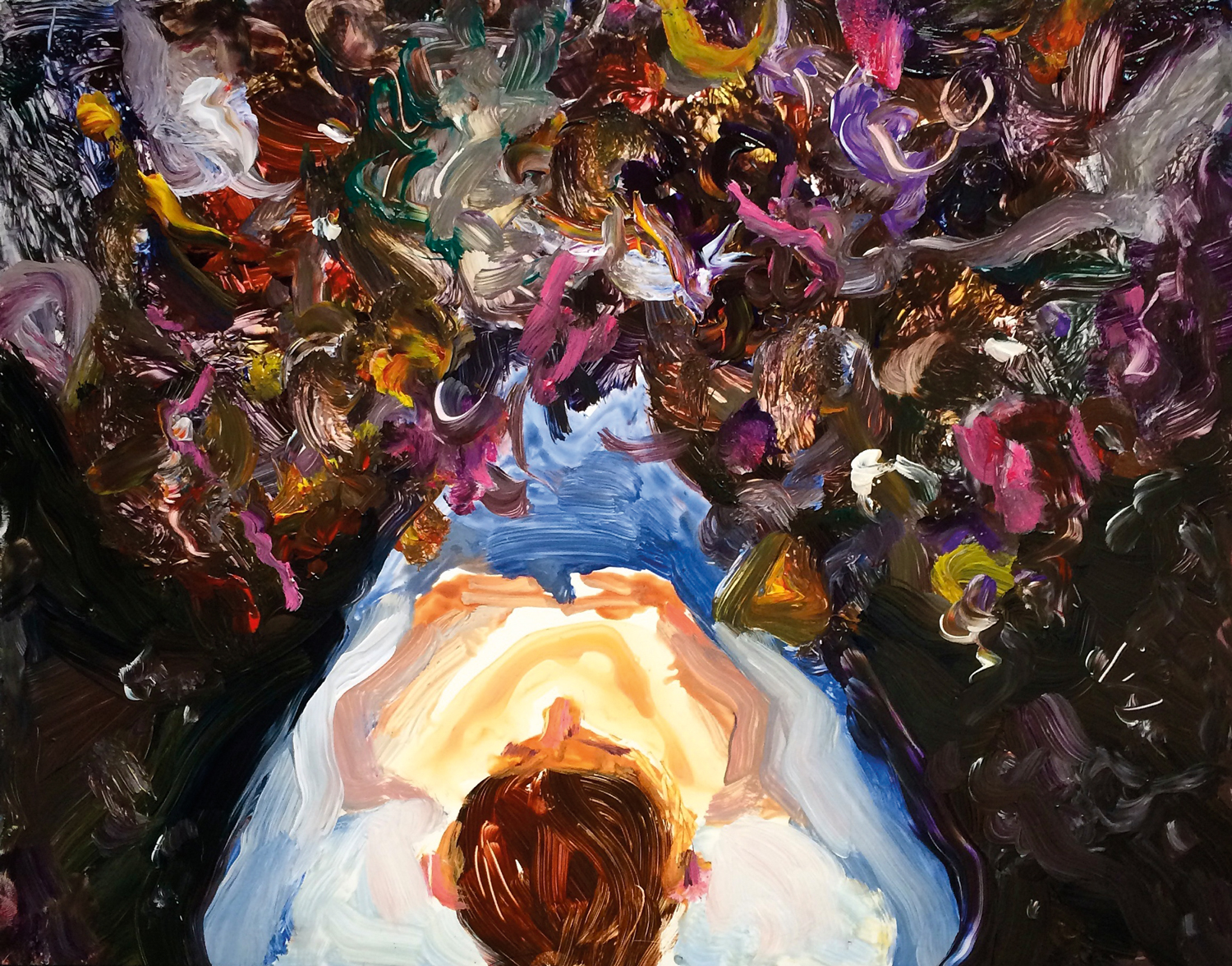Of the six Dharmas of Naropa, two are for the daytime (tummo/chandali and illusory form, or gyulu), two are for the night (milam, or dream dharma and osel, luminosity yoga), and two are for death and beyond (bardo yoga and phowa). Phowa and bardo yoga are supplemental practices. If you accomplish the four root dharmas of the day and night, you don’t need the death yogas. Phowa and bardo are insurance dharma. And I’m an insurance salesman. It’s good to have this protection policy, because things don’t always go as planned at the end of life.
Bardo yoga is more contemplation than meditation. Contemplating death is a cold plunge for your psyche, a wake-up call. The purpose is to become familiar with the stages of the bardos during life, so you’ll recognize them in death. The practitioner engages in contemplations and visualizations that transform the three death bardos (the painful bardo of dying, the luminous bardo of dharmata [Sanskrit; the true nature of phenomenal existence], and the karmic bardo of becoming) into the three kayas (or “three bodies of the Buddha”—the dharmakaya [body of absolute truth], the sambhogakaya [body of enjoyment], and the nirmanakaya [body of emanation]). Bardo yoga downloads a psychic GPS that helps you find your way through an otherwise bewildering death experience. You’re essentially installing pop-ups into your unconscious mind that will ping into your consciousness just when you need them the most.
Bardo yoga is designed both to wake you up to the fact that you’re in the bardo, and to help you attain lucidity, or awareness, in what the Tibetans call “the dream at the end of time.” The practice is allied to dream yoga in this regard. If you don’t wake up and take control in a dream, what does? Your unconscious habits. Similarly, if you don’t become lucid in the dream at the end of time, what controls your bardo experience? Your habits. Bardo yoga transforms an otherwise harrowing nonlucid death experience, where you’re battered around by the winds of karma, into a lucid joy ride. Instead of being tossed about by the gusts of habit, you put up the sails and glide gracefully into your next birth.
It’s not safe to die as long as you have an unconscious mind, because those forces of the dark side erupt to the surface and take over in the bardo. It’s just like when a dream flips into a nightmare. With bardo yoga, you “stuff the ballot box” during life, and reap the results by becoming lucid to what’s really happening as you die. You fill your unconscious mind with good habits that will then take good care of you when you die. The insurance policy is cashed in when you really need it.
Death is often personified as the Grim Reaper. He carries a scythe designed to reap, which means “to cut” as well as “to harvest.” Likewise, bardo yoga shreds all our misconceptions around death, born from ignorance and lack of familiarity, and therefore removes all fear. Bardo yoga also serves to harvest our good karma cultivated during life, allowing us to take full advantage of this once-in-a-lifetime opportunity. If you’re prepared, there are more opportunities for spiritual development in death than there are in life. The Grim transforms into a Grin. Because of the fluidity and the emptiness of the bardos, it’s much easier to move things forward. Imagine a huge tree stump on land. It takes a dozen strong men to budge it. Now place that stump in water, and one person can move it.
In Jamgön Kongtrul’s Treasury of Knowledge, Naropa is quoted as saying:
The consciousness in a dream is seven times clearer than during the daytime, and the bardo [consciousness] is seven times clearer than the dream [consciousness] and is easier to change. Since the consciousness is not supported, it is [also] difficult to stabilize your mindfulness and intention. But if you can maintain mindfulness [lucidity], traversing the path will be trouble-free, and you will be liberated by one session of meditation in the bardo.
But the promise of the bardos is in direct proportion to their peril. If you’re not prepared, the fluidity and groundlessness can lead to panic. That panic, which increases the further you go into the bardos (because the karmic winds pick up), eventually forces you to make bad choices due to your inability to withstand the tornadic onslaught of your own mind. The late Thrangu Rinpoche spoke about the benefits of bardo yoga in Journey of the Mind:
Your mind will become stable and the whole thing [bardo experience] will slow down so that you can examine the situation that you are moving towards. You can say, “Well, who are these people? What kind of parents are they going to be? What kind of life am I going to have?” It is up to you what you want to be reborn as. [But] if you are completely under the power [of your habits], you would not even notice the species….[With preparation] you will say, “Wait a second; these are pigs!” or “Wait a second; these are dogs!” “This is a human being,” and so on.
One harvest of bardo yoga is to realize, as is stated in The Tibetan Book of the Dead, “Emptiness cannot harm emptiness.” It leads to fearlessness in the face of death. Death only applies to the world of form. Ego is exclusive identification with form. If we can realize our egoless nature during life via bardo yoga, then death no longer has any meaning. The philosopher David R. Loy has said, “Such is the Buddhist goal: to discover that which cannot die, because it was never born.”
The Bardo Principle
Bardo yoga really comes to life—not just to death—when we understand the bardo principle. “Bardo” is a Tibetan word that means “gap, transitional process, in between.” Once we’re sensitized to the bardos, we realize that we’re in them all the time. The universality and practicality of bardo yoga then illuminates every waking step. For example, the stages of the dissolution process that occurs at death are reiterated at multiple levels throughout the day. Tenga Rinpoche says, “These stages do not only occur at the moment of death; they occur whenever the pranas enter the avadhuti [central channel] …the same dissolution processes occur during samadhi, when falling into deep sleep, and during orgasm.” Bokar Rinpoche says they also occur in an extremely subtle manner whenever a thought dissolves from our mind.
Bardo yoga downloads a psychic GPS that helps you find your way through an otherwise bewildering death experience.
Bardo yoga is a form of “stealth help.” There’s more going on than meets the eye. In techno-speak, bardo yoga is a bidirectional, or reciprocating, practice. It’s a “twofer” yoga. The contemplations ping forward to bring about lucid dying; they also ping back to bring about lucid living. “Lucidity” is a code word for “awareness,” and if there’s one curative agent for all psychospiritual pathology, it is awareness. The poet Kabir said of death, “What is found now is found then.” Which implies that what is found then is found now. Practice bardo yoga during life, and the fruits will be harvested at death. But the fruit can also be reaped right now. The following practices are ways to bring bardo yoga to life.
Practice: Wait a Second
Impulses, driven by unconscious processes, propel our actions. And “action” is the literal translation of “karma.” We take birth life-to-life, or moment-to-moment, because of our karma, powered by our impulses.
The practice is to sensitize ourselves to our urges, and to briefly hold before we act. Anytime you feel the mindless itch to move, take a sip of space, gulp the gap, and ask yourself: do I really need to do or say that? This simple practice can radically streamline your life, and keep you from taking birth into unfortunate circumstances and lower-realm states of mind.
The Pali canon proclaims that “the mind leads all things.” In the context of bardo yoga, this means that the states of mind you inhabit now are paving the way for entire states of existence after you die. Padmasambhava, the author of The Tibetan Book of the Dead, said, “If you want to know your past life, look at your present condition. If you want to know your future life, look at your present actions.”
The word “dharma” comes from a Sanskrit root that means “to hold,” as in “to contain,” as well as “to cease.” With impulse control we’re engaging both meanings. We’re learning how to contain ourselves by ceasing to act. Until the ego is transcended, it needs to be contained. Every time you sense an impulse, you will feel some level of contraction. The practice of impulse control, the exhortation to stop dead in our tracks, creates a new contrast medium (of cessation) that allows you to see and feel things you haven’t seen or felt before. It allows you to become aware of how you contract, and therefore move. It shows you how addicted you are to action.
We’re all thought junkies, hooked on the movies of our mind. Bardo yoga is diagnostic and prescriptive in this regard. It diagnoses our addiction to movement, and prescribes the practice of cessation, meditation, or anything that holds the mind.
Death Is Birth
Bardo yoga is just as much about birth, and the study of origins, as it is about death, and the study of endings. With this in mind, where does our addiction to movement come from? On one hand, it originates in the bardo. When the thermonuclear power of the awakened mind is unleashed at the moment of death, and the dharmakaya (dharmata is one aspect of the dharmakaya), the “body of truth,” is laid bare, the unprepared mind contracts out of fear. For the ego, the dharmakaya is akin to a corpse. And the impulse is to run away. Bardo yoga amounts to a mental savasana, or cognitive corpse pose, that allows us to hold instead of flee. When The Tibetan Book of the Dead repeatedly exhorts, “Do not be distracted,” it’s saying, don’t pull away, don’t move from this amazing opportunity.
Death is the dharmakaya. But that’s not a body we identify with, because it’s no-body. Who wants to identify with a corpse? As Freud said, “Ego is first and foremost a body ego.” It therefore cries out at death, “That’s not me! I’m not nothing. I’m something!” It does so simply because we’re not familiar with our bodiless or formless nature. We’re familiar with form—because we meditate on it all the time.
The Tibetan word for meditation is gom, which means “to become familiar with.” Whether we know it or not, we’re always meditating, always becoming increasingly familiar with whatever we attend to, and unwittingly practicing a form of anti-bardo yoga, filling or avoiding any gap that arises because of our fear of space. Bardo yoga invites us to attend to the gaps. To become familiar with our deepest and truest nature: the space-awareness, the empty body of truth, at the core of our being. But for the ego, so excessively identified with form, it’s too much truth. Formlessness, the dharmakaya, is just too bright. There’s no place for personal identity, for falsity, in this vast open space, so the ego whiplashes in its collision with the infinite.
Ego recoils, as we tend to do upon encountering a corpse, because ego is exclusive identification with form, and death reveals our formless (and therefore deathless) nature. Because of its impulsive bad habits, the ego contracts violently against the revelation of truth, not merely in ultimate self-defense, but in primordial self-generation (the self-defense, as we’ll see, takes place more in moment-to-moment distraction). It’s self-inflicted violence, a primal wound, that then becomes embodied in the matrix of the ego itself, generating the most insidious and protracted form of PTSD (in this case, Post-Truth Samsaric Disorder). It results in the primordial trauma (and corresponding amnesia) upon which all secondary traumas (and amnesias) reverberate. Our life then becomes a sophisticated avoidance strategy, the constant denial of impermanence and death, as we attempt to avoid the harshest and noblest of all truths: we don’t exist.
The problem in the bardos is that we’re simply not familiar with our formless nature. The unbearable lightness of being revealed at the moment of death is so light (in both senses) that there is no being, no ground, no-thing upon which to stand. Bardo yoga formally introduces us to ourselves, making the lightness bearable, and the experience understandable.
But like death itself, bardo yoga is not for the faint of heart. If silence is for bumping into yourself, death is for slamming into yourself. Death is just a forceful method of liberation—because it’s nonnegotiable and uncompromising. If you’re not prepared with practices like bardo yoga, you’re going to slam into space with such velocity that you’re going to freeze through the force of implosive movement itself, and unwittingly hurl yourself into lifetime after lifetime as the embodiment of petrified space.

But you see, it doesn’t have to be so petrifying. Bardo yoga allows you to slow down, to get a hold on reality, and to Grin at the moment of death as you say to yourself, “Been there, done that.” The result, as stated repeatedly in The Tibetan Book of the Dead, is that “recognition and liberation are simultaneous.” The greatest obstacle is transformed into the greatest opportunity.
The Primordial Distraction
The whiplash gives rise to the primordial contraction away from reality (the dharmata), which acts as the primordial distraction. To dis-tract is to literally “draw apart.” Our inability to hold to the dharmata at the end of the bardo of dying, due entirely to our failure to identify with it, results in a primal ripping of reality into self and other. It’s a rip that continues to be torn every single time we get distracted in life, and actually appears as a Grand Canyon in the bardo of becoming. The contraction-distraction is actually onto nothing. There is no-thing to contract onto, no fully reified self, at this stage of the bardo. The contraction itself creates the illusion that there is a self.
Bardo yoga reveals that this process is bidirectional. We’re distracted in life because we dis-tract in the bardos; we dis-tract in the bardos because we get distracted in life. This means we can heal the fracture of duality, and prepare for the ultimate reunion at death (referred to as the union of the mother-and-child luminosity), every single time we come back to the present moment. As Rumi said, “Our death is our wedding with eternity.” Propose to eternity now.
To distract is to forget is to move away from reality. It’s the relentless self-defense that takes place as the moment-to-moment expression of the primordial amnesia. The neuroscientist Ruben Laukkonen said, “Resting in the present moment is annihilation.” For the ego, to rest in peace (RIP) in the present moment is to die. Svaha savasana. Stop moving, stop distracting, die now, and dis-cover the truth before you’re forced to do so. If the essence of conscious spiritual practice is remembrance, the essence of unconscious samsaric practice is forgetfulness. Hence the extraordinary role of mindfulness as yet another iteration of bardo yoga.
Shadow Work
Bardo yoga, as a death simulator, unmasks the truth: our essential nature is emptiness. It also reveals that our fear of death is a secondary and inauthentic fear. Our real fear is that we’re already dead, that we don’t exist right now! But this truth is too light to bear. So we stuff the fear into the darkest bottom of the unconscious mind. And there it festers like a psychic cyst, waiting to be drained by the scalpel of bardo yoga (or perhaps the scythe of the Grin Reaper). Then we deny, repress, and project the truth of the emptiness within, the corpse at the core of our being. We throw it out and away from ourselves, as far as we possibly can. What is farther away than death? We try to hide it by projecting it to the end of life, essentially diverting ourselves unto death. It’s a stunning form of distraction, a pulling apart and rejection of our truest Self. And the ultimate procrastination. Ego basically says, “I’ll deal with this as late as humanly possible.” Even the death yogas of bardo and phowa are placed at the end of the Six Dharmas, when what they actually represent is the heart of the Six Dharmas.
It’s totally unfair to death. Off in the most distant of all futures, death becomes a convenient refuse heap for all our refused experience. And it casts a formidable shadow over our entire lives. Bardo yoga therefore serves as the deepest possible shadow work. In psychological jargon, when a situation affects you more than it informs you, you’re probably dealing with a projection. What affects us more than death? It’s plastered with our projections, which is why it disturbs us, why we try to avoid it at all costs, and why the West considers it such a defeat. The real cost of avoidance is an authentic life, the unnecessary fear of impermanence (the most immediate expression of emptiness), and the denial that life is always embraced by the Lord of Death.
Psychospiritual shadow work involves owning up to our projections, retracting what we have distracted (projected), and relating to the unwanted experience here and now—not then and there. Do the inner work. Die now. Face up to your projections and realize your inherent nonexistence. When you finally realize you don’t exist, death no longer exists. You apprehend the perennial exhortation: if you die before you die then when you die you will not die. Bardo yoga culminates in the death of death.

